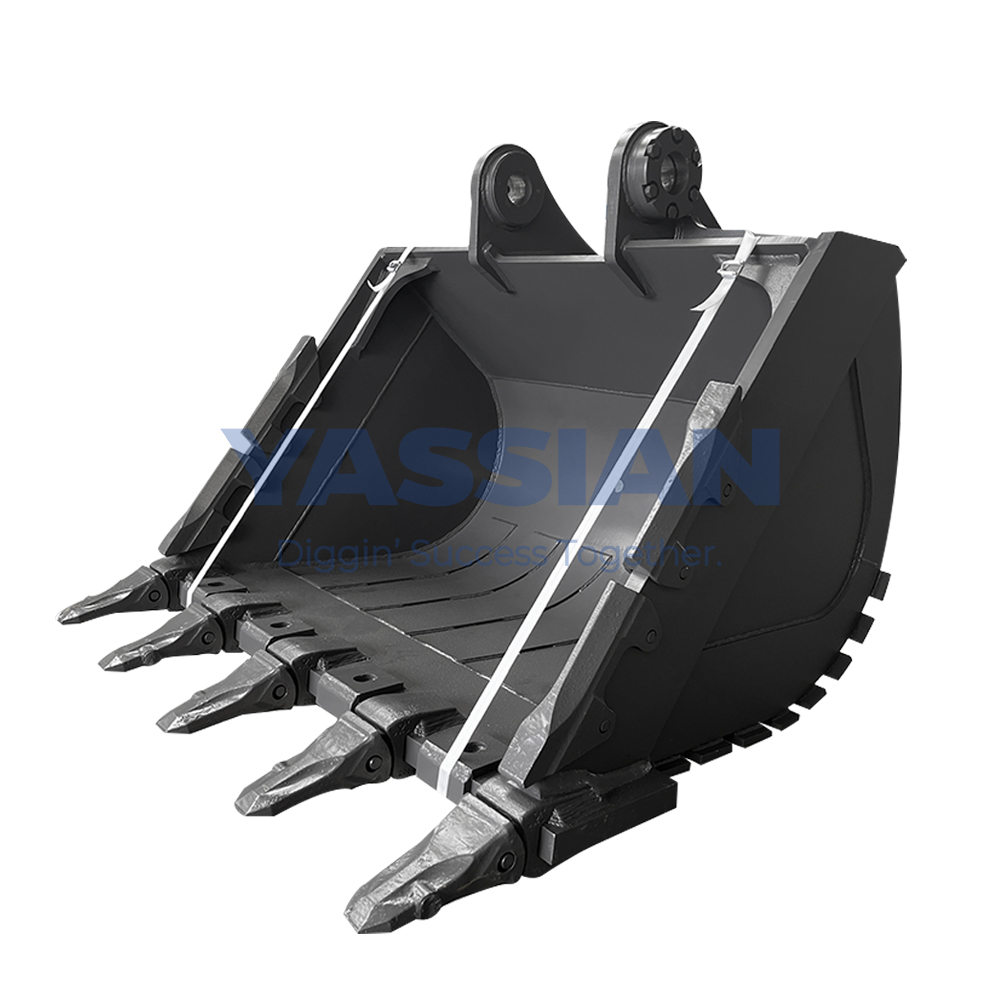Contact us Today by Email | info@china-yasheng.com
- All
- Product Name
- Product Keyword
- Product Model
- Product Summary
- Product Description
- Multi Field Search









How to determine the capacity of the excavator bucket?
The capacity of an excavator bucket is typically determined based on specific engineering requirements and the specifications of the machinery involved. Here are some common methods used to determine the capacity of an excavator bucket:
Design requirements: The minimum capacity of the bucket is determined based on the design requirements and specifications of the project. This may involve parameters such as the depth, width, and length of excavation. Engineers typically calculate the required bucket capacity based on the earthwork volume of the project.
Machinery specifications: The capacity of the bucket is also influenced by the specifications and load-bearing capacity of the machinery being used. The bucket capacity should be suitable for the working range and performance of the machinery. Using a bucket that matches the specifications of the machinery ensures safe and efficient operation.
Working environment: The capacity of the bucket should also consider factors of the working environment, such as soil density, moisture, and excavatability. Different types of soil may have varying requirements for bucket capacity. For example, loose soil may require a larger bucket capacity to improve excavation efficiency, while compacted soil may require more powerful machinery and a smaller bucket capacity to tackle excavation challenges.
Transport requirements: The capacity of the bucket should also account for the transportation needs of the excavated material. If the bucket capacity is too large, it may lead to overloading and transportation difficulties. Therefore, a balance needs to be struck between bucket capacity and transportation efficiency.
In summary, determining the capacity of an excavator bucket is a comprehensive process that considers multiple factors, including specific engineering requirements, machinery specifications, and working environment. It requires careful assessment and calculations by engineers and professionals to ensure that the bucket capacity meets the needs of the project.

What are some common methods used to determine the capacity of an excavator bucket?
There are several common methods used to determine the capacity of an excavator bucket. Here are a few of them:
Geometric calculations: One method is to calculate the bucket capacity based on its geometric dimensions. The volume of the bucket can be calculated by using the formula for the volume of a trapezoidal prism or a similar geometric shape. This method requires measuring the bucket's length, width, and depth to calculate the volume.
Water displacement: Another method involves filling the bucket with water and measuring the volume of water displaced. By subtracting the initial volume of water in the bucket from the final volume after filling, the capacity of the bucket can be determined. This method is often used for smaller buckets or when a quick estimation is needed.
Load testing: Load testing involves filling the bucket with a known weight of material, such as sand or gravel, and measuring the weight of the filled bucket. By dividing the weight of the material by its bulk density, the volume of the material can be calculated, which represents the capacity of the bucket. Load testing provides a more accurate measurement of the bucket capacity under real working conditions.
Manufacturer specifications: The capacity of an excavator bucket can also be determined by referring to the manufacturer's specifications and documentation. Equipment manufacturers typically provide information on the bucket's capacity based on its design and intended use. It is important to consult the manufacturer's guidelines and recommendations for accurate bucket capacity information.
Software and digital tools: There are various software programs and digital tools available that can assist in calculating the capacity of an excavator bucket. These tools consider factors such as the bucket's shape, material properties, and the specific parameters of the excavation project to provide accurate capacity calculations.
It's important to note that these methods provide estimates, and the actual capacity may vary depending on factors such as soil conditions, material density, and the specific design of the bucket. It's recommended to consult with equipment manufacturers or engineering professionals for precise capacity calculations based on the specific circumstances.
